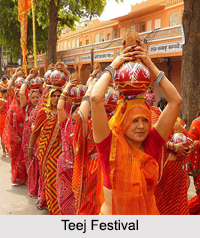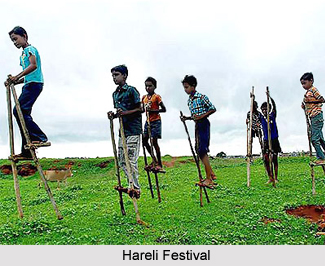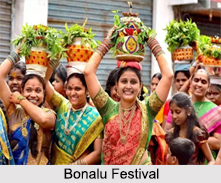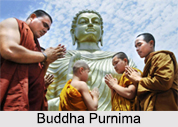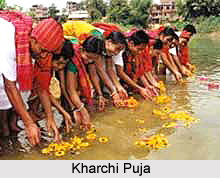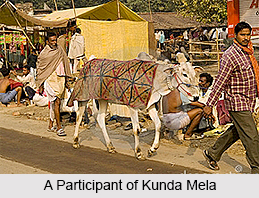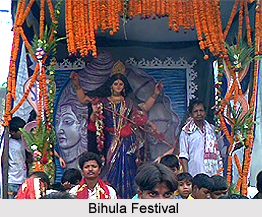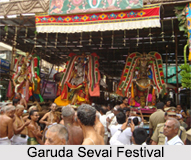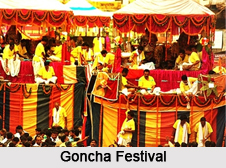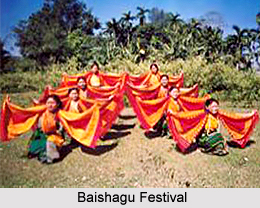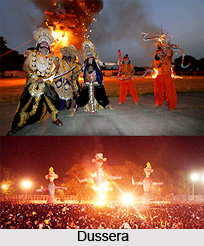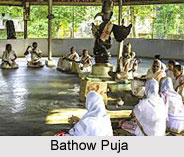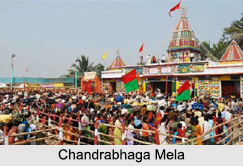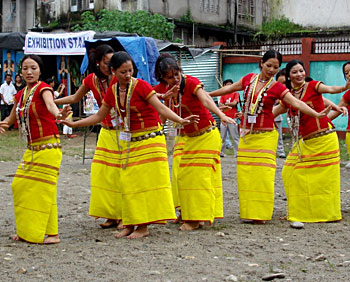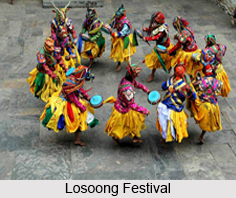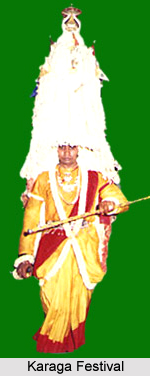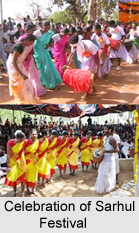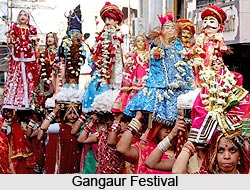Introduction
Bihugeets are one of the most important components of Assamese folk music.
These reflect a kind of pagan devotion to nature which is manifested in popular
festivals that are associated with the change of seasons. These popular
festivals, which mark the advent of spring and autumn, are called Bihus.
The Bihu-songs
are the ones which accompany these festivities.
Origin and History of Bihu Geets
The origin of Bihu Geets trace back to "Bonoriya Geet," the earliest form of these songs, characterized by their wild and passionate expressions of love, longing, and youthful vigor. Traditionally sung by young people in fields or forests, these songs celebrated the vibrancy of life. The 15th-century Bhakti movement, spearheaded by influential figures like Sankaradeva and Madhavadeva, significantly influenced Assamese culture, including Bihu Geets. During this period, the songs evolved to include devotional themes, praising the divine and seeking blessings.
The Bhakti movement’s emphasis on social reform further influenced
Bihu Geets, embedding ideals of unity, harmony, and moral values. These songs,
thus, became a medium to promote cultural cohesion while preserving their core
essence of celebrating life and nature. Over time, Bihu Geets have transcended
their origins, maintaining their significance as an enduring symbol of Assamese
tradition and collective identity.
Original Concept of Bihu Geets
Bihu Geets are deeply connected to fertility and the
agricultural cycle. These traditional songs were sung to invoke blessings for
abundant harvests and to honor the rhythms of nature and life. Passed down
through generations via oral tradition, Bihu Geets have been preserved and
adapted over time, reflecting the evolving cultural landscape. The songs play a
vital role in Assamese society, celebrating the changing seasons and the
connection between human life and the earth’s cycles. Through their continued transmission,
Bihu Geets remain a key cultural expression, linking past generations with the
present.
Evolution of Bihu Geets
The evolution of Bihu Geets reflects a dynamic interplay of cultural influences, historical transitions, and societal changes in Assam. Initially rooted in the tribal traditions of greater Assam, these songs were shaped by the cultural traits of diverse communities, including their melodies, tonal structures, and rhythmic patterns. Over time, Bihu Geets transcended their tribal origins to embody the essence of unity in diversity, integrating elements from both tribal and non-tribal traditions.
The songs carry traces of Mongoloid and Aryan cultural influences, along with Proto-Australoid and Dravidian traditions, resulting in a rich and complex cultural tapestry. The early forms of Bihu Geets existed in the pre-Hindu period, long before Hindu kings ruled Assam. Aboriginal tribes like the Bodo, Maran, Matak, Tiwa, Dimasa, and Hasong significantly influenced the nascent forms of Bihu songs and dances, contributing their Oriental flavor and unique stylistic elements.
As Assamese society evolved, Bihu Geets underwent changes influenced by religious movements, particularly during the Hindu and Bhakti eras. The arrival of Hindu philosophical thought and Sanskritization brought linguistic and thematic refinements to the songs. Assamese literature, including poetry and drama, also played a pivotal role in enhancing the lyrical quality and poetic devices employed in Bihu Geets. These influences transformed Bihu songs into a medium for artistic expression that resonated with the broader Assamese identity.
In contemporary times, Bihu Geets have expanded their thematic scope to address social, political, and modern issues. They have also embraced various musical genres, such as pop, rock, and fusion, while preserving their traditional essence. The accompanying instruments, costumes, and dance forms have similarly evolved, reflecting the amalgamation of cultural identities over centuries.
As with other folk songs, improvisation continues to be a part of the composition. There are instances of insertions even of common English words that have gone as current usage into the language. However, this has not in any way affected the popular structure of the song.
Theme of Bihugeets or Bihu Songs
Bihu songs, spontaneous in passion and thought, are composed
mostly in couplets. Each couplet usually conveys one particular emotion. Most
of these songs are romantic. They are youthful songs addressing the emotions,
joy and pain of youth. They are characterized by sweetness, lucidity and tender
shades of suggestion. The Bihu songs convey not only the mood of light amorous
flirtation, but also every mood that is reflected in human behavior.
Some of the Bihu songs are apparently symbolic and there is in them a certain
level of submerged meaning. In such poems, an image is used on
"twin-levels", the understanding of which serves as a clue to
submerged meanings; this is worked out through the interaction of the two
levels. There are Bihu songs in which the red Riha, i.e., a girl`s
breast-cloth, or the bamboo tree is used as a symbol of ripeness for young
girls; all this is connected in a symbolic way with the "procreative
urge" of the earth or of woman. The Sindoor or vermilion put in the
parting of a girl`s hair is a sex-symbol; the vermilion-mark is a blood
substitute. This mark on the forehead as also in the parting of a girl`s hair
symbolises the fact of her maturity and the capacity to receive and hold.
Types of Bihu Geets
Bihu Geets, an integral part of Assam’s Bihu festival, embody the region’s cultural and social essence. These songs can be broadly categorized into the following types:
1. Romantic or Love Songs
2. Nature Songs
3. Community Songs
4. Children Songs
5. Spiritual Songs
6. Ritual Songs
Characteristics of Ethnic Bihu Songs:
1. Spontaneity and improvisation define them.
2. They are extempore in nature.
3. Both men and women participate in singing.
4. The lyrics follow a structured format, including an
introduction, main content, and conclusion.
5. Specific rhythmic beats are maintained.
6. The melodies often resemble Indian classical music ragas,
using five basic notes.
7. Indigenous instruments accompany the songs.
Romantic Bihu Geets dominate the repertoire, using poetic, satirical, and comic expressions to portray the emotions of the season and the exchange of love between lovers. Nature songs highlight the region's beauty, describing themes such as harvesting, fishing, and the vibrant natural landscape that characterizes the festival.
Community songs, including Husoris, emphasize familial bonds, customs, and traditions, promoting social and moral values while narrating the rich heritage of Assamese society. Spiritual songs often refer to nature gods and are composed to seek divine blessings, with lyrics tailored to appease the deities. Special songs dedicated to children use playful words and imagery suitable for younger audiences, ensuring inclusivity.
The evolution of Bihu Geets reflects varied influences over time. Initially rooted in pre-Hindu traditions that described natural phenomena integral to tribal culture, they later incorporated themes of Hindu gods and goddesses. The Vaishnavite movement led by Srimanta Sankardeva introduced devotional themes. Islamic and Christian influences further diversified the lyrical content, while modern influences, including Bollywood, have infused contemporary styles into traditional Bihu music.
Musicality and Musical Structure of Bihu Geets
The musicality and structure of Bihu Geets are distinguished
by their unique characteristics, setting them apart from other musical forms.
The defining feature of Bihu songs is their foundation on the pentatonic scale,
a musical structure with five notes per octave, as opposed to the heptatonic
(seven-note) scales commonly seen in major and minor scales.
This pentatonic framework, prevalent in Chinese and other
South-East Asian music traditions, lends Bihu Geets a distinctive melodic
identity. Pentatonic scales, classified into hemitonic (with semitones) and
anhemitonic (without semitones), are globally recognized for their simplicity
and versatility.
The interplay of the pentatonic mode in Bihu Geets influences both the tunes and the accompanying lyrical text. This unique structure contributes to the vibrant rhythm, dynamic flow, and emotive quality of Bihu songs, cementing their cultural significance in Assamese music while highlighting their connection to broader musical traditions.
